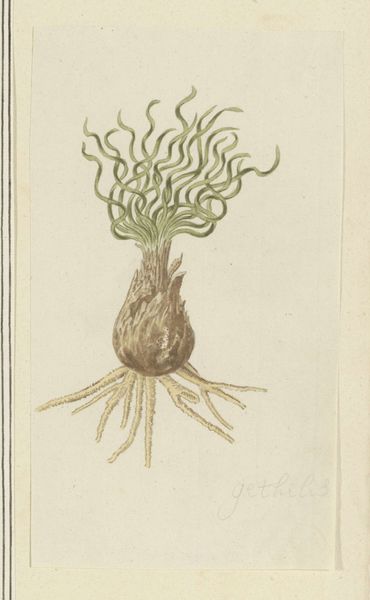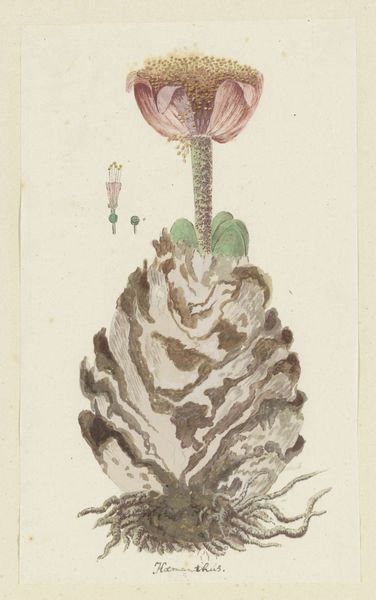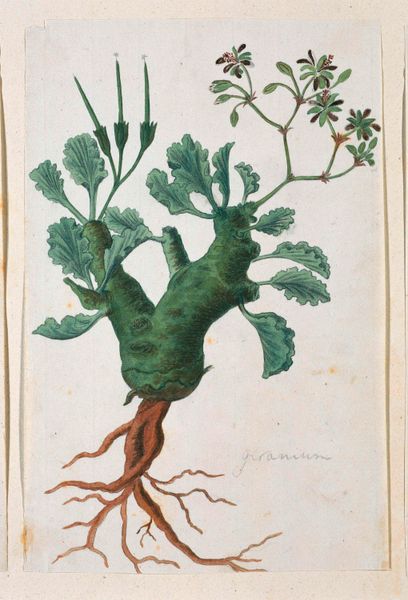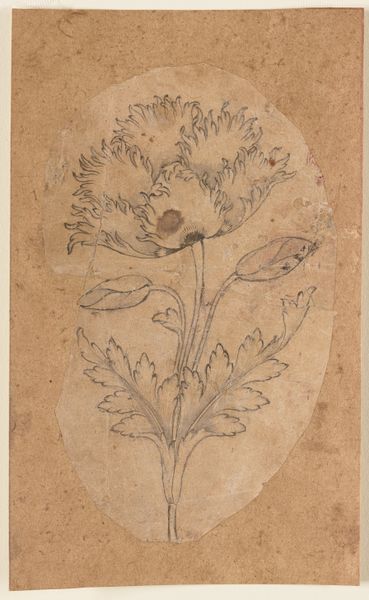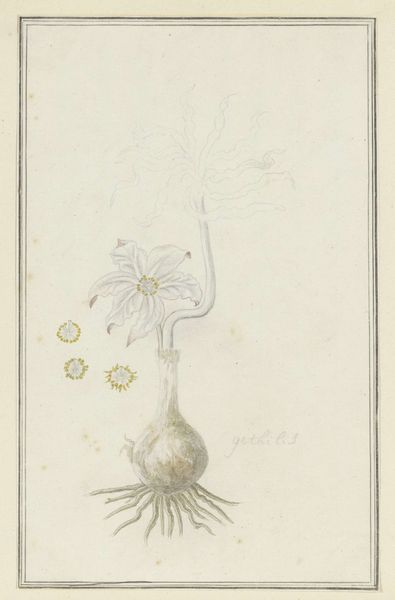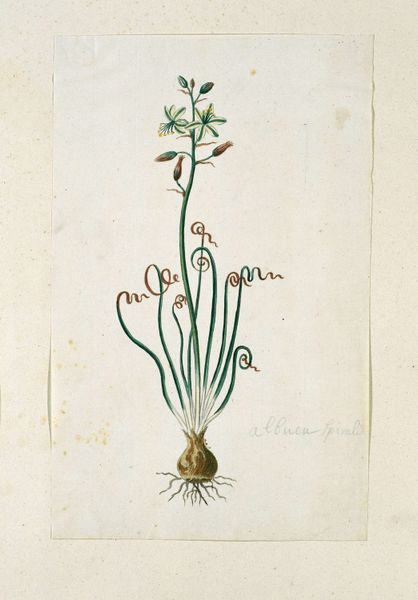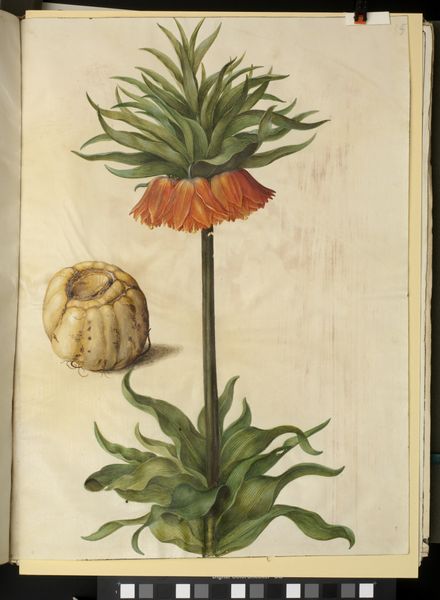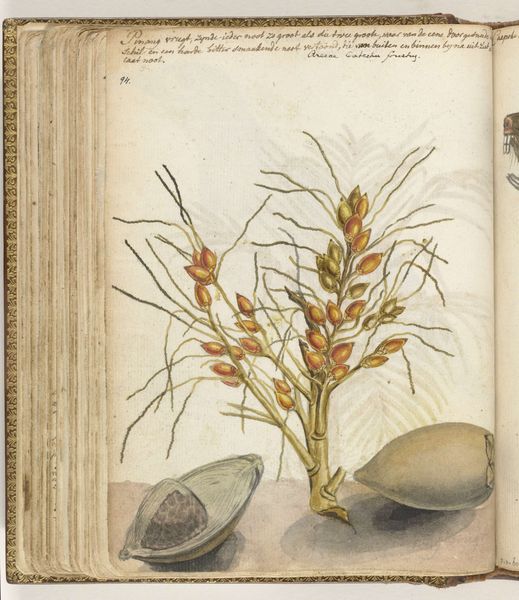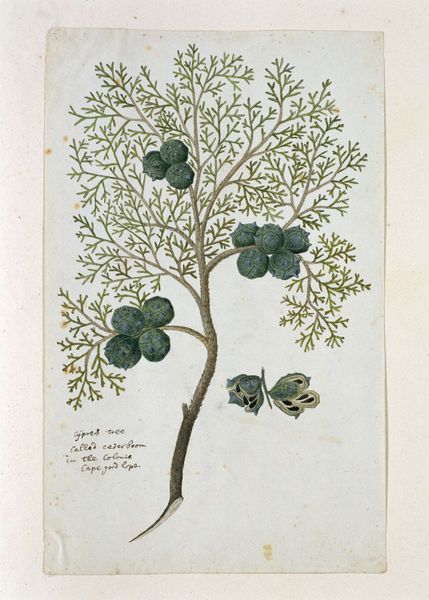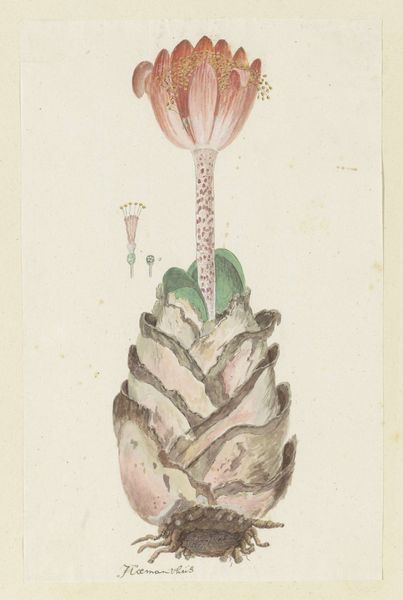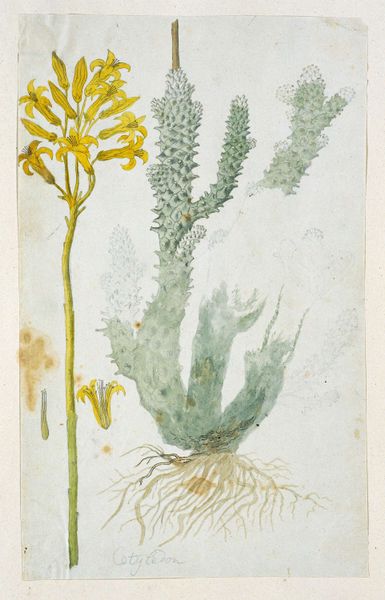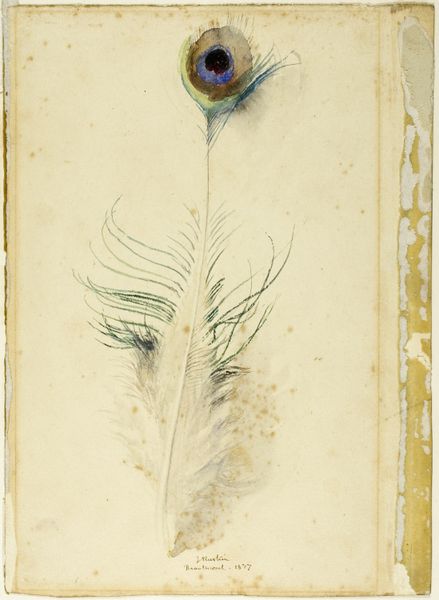
Boophone haemanthoides F.M. Leighton, formerly Amaryllis distycha (Bushman poison-bulb, or Oxkiller) Possibly 1777 - 1786
0:00
0:00
Dimensions: height 660 mm, width 480 mm, height 342 mm, width 212 mm, height mm, width mm
Copyright: Rijks Museum: Open Domain
Curator: What we have here is a watercolour drawing, possibly from 1777 to 1786, by Robert Jacob Gordon. It’s titled "Boophone haemanthoides," but was formerly known as "Amaryllis distycha," which goes by the delightful common names of Bushman poison-bulb, or Oxkiller. Editor: Wow, Oxkiller! Straight away I get a strange feeling… like an alien life form in muted colours. It has such delicate blooms on top, contrasted with this lumpy, almost grotesque bulb. Curator: That contrast is key. Gordon, working in the naturalist tradition, was very interested in depicting the details of the plant's morphology but also its social use. This bulb, while visually arresting, was used as a poison. Hence the "oxkiller" tag. Editor: It makes me think about how beauty and danger are often intertwined in nature. The subtle colouring, almost pastel, doesn’t hint at all at lethality. I mean, look at those feathery, straw-coloured petals! Innocence itself. It's cleverly subversive. Was Gordon consciously playing with those themes, do you think? Curator: It’s hard to know Gordon's full intention. His patrons, probably wealthy collectors in Europe, would have appreciated these botanically accurate portrayals from far away places. But I think the common name, which Gordon faithfully records, does some of that work for him. It acts as a little warning label about human relationship with nature. Editor: So it’s art with an embedded cautionary tale, then! I keep coming back to that tension between delicacy and… well, bulbousness. And those stringy roots look like Medusa's locks. Curator: Gordon’s work highlights a historical perspective to science where observation wasn't divorced from an awareness of context and function, not only for an aesthetic contemplation of botanical diversity. Editor: It’s funny how a seemingly straightforward plant portrait can hold so much simmering just below the surface. Makes you think about what else we might misjudge at first glance.
Comments
No comments
Be the first to comment and join the conversation on the ultimate creative platform.
